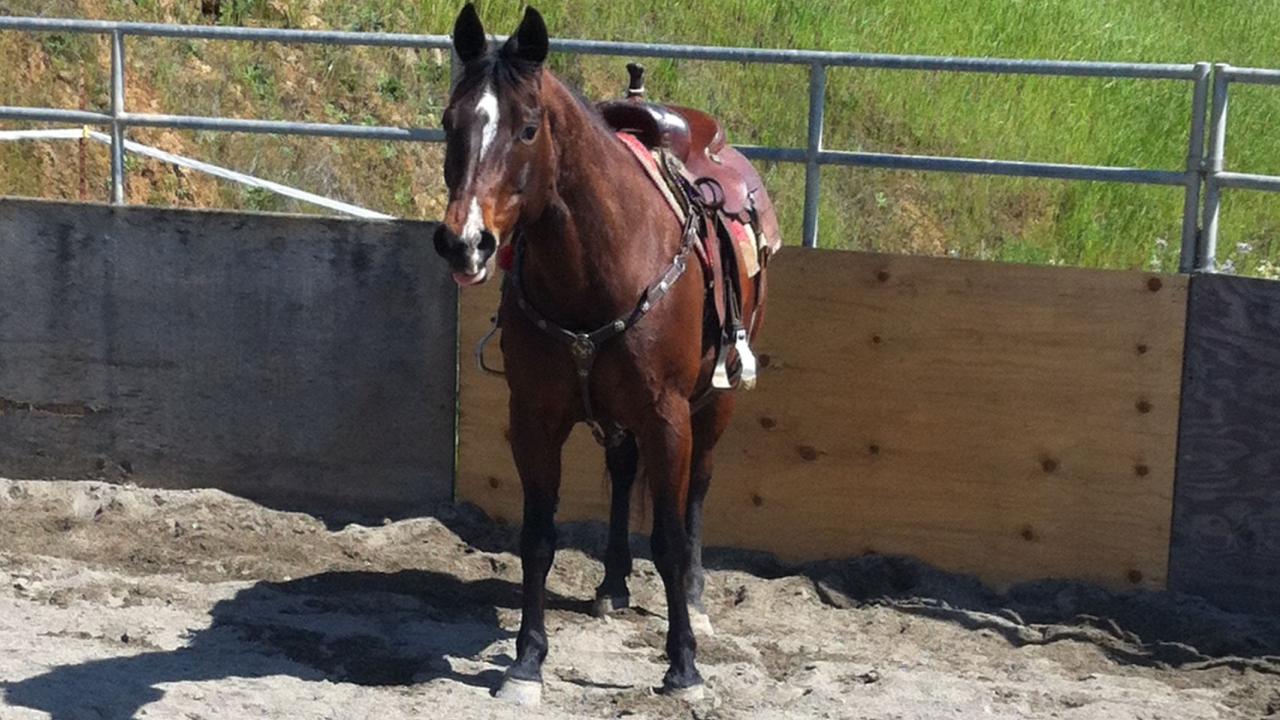
Surgery to Remove Bladder Stones Alleviates Cutting Horse’s Pain
Peppy, a 21-year-old Quarter Horse gelding, was exhibiting difficulty urinating and also had blood in his urine. His owner, Dr. Peter Bernstein, had Peppy examined by his primary care veterinarian, who identified two stones in his bladder. Based on the diagnosis, they decided it was best to refer Peppy to the equine experts at the UC Davis veterinary hospital for treatment.
The bladder stones needed to be surgically removed, and Dr. Scott Katzman of the Equine Surgery and Lameness Service—who has a special interest in urinary tract surgery—recommended that the stones be removed while utilizing standing sedation via a technique recently developed at UC Davis, which involves the combined efforts of the equine surgery, ultrasonography and anesthesia specialists.
At the time of surgery, standing sedation was maintained, and epidural anesthesia was performed under the supervision of a board-certified anesthesiologist. This provided Peppy with relaxation and local analgesia throughout the procedure. However, as Peppy was being prepared for surgery, it was discovered that one of the stones had moved into his urethra where it had become lodged. This stone was visualized endoscopically at the distal aspect of the urethra. This stone was manually crushed and removed under endoscopic guidance, allowing for urinary catheter placement to facilitate removal of the second stone.
After removing the first stone, Dr. Pablo Espinosa performed a perineal urethrostomy (PU), which allowed for direct access to Peppy’s bladder. The second stone was also visualized endoscopically, and maneuvered into a laparoscopic retrieval pouch. With assistance provided by the Large Animal Ultrasound Service, radial shock wave lithotripsy was utilized to fragment the stone, until all fragments contained within the pouch could be removed through the PU site. This technique allows for containment, stabilization, fragmentation and rapid removal of bladder stones in the standing sedated horse, thereby improving outcome in these cases.
The following day, endoscopy of the urinary tract was repeated, which revealed that no stone fragments remained. Postoperatively, Peppy was closely monitored by the veterinarians, students and staff in the large animal hospital, and received systemic anti-inflammatories and antibiotics.
“Peppy was feeling great again shortly after the surgery,” said Dr. Bernstein. “I’m so grateful to Dr. Katzman and everyone at UC Davis for coming up with an innovative solution to Peppy’s condition. Throughout the entire process, Dr. Katzman was so responsive and took wonderful care of Peppy.”
Dr. Bernstein, who works as a psychologist with veterans, helping them recover from post-traumatic stress disorder and other related conditions, says his bond with Peppy helps him de-stress from the emotional rigors of his job.
“I try to take a break every afternoon and spend time with the horses and get in a workout,” said Dr. Bernstein, who has worked with sport horses for 30 years. “Horses are an amazing outlet that way.”
Peppy made a full recovery and was soon back to full performance as a cutting horse, an activity he and Dr. Bernstein have done together almost his entire life.
# # #
